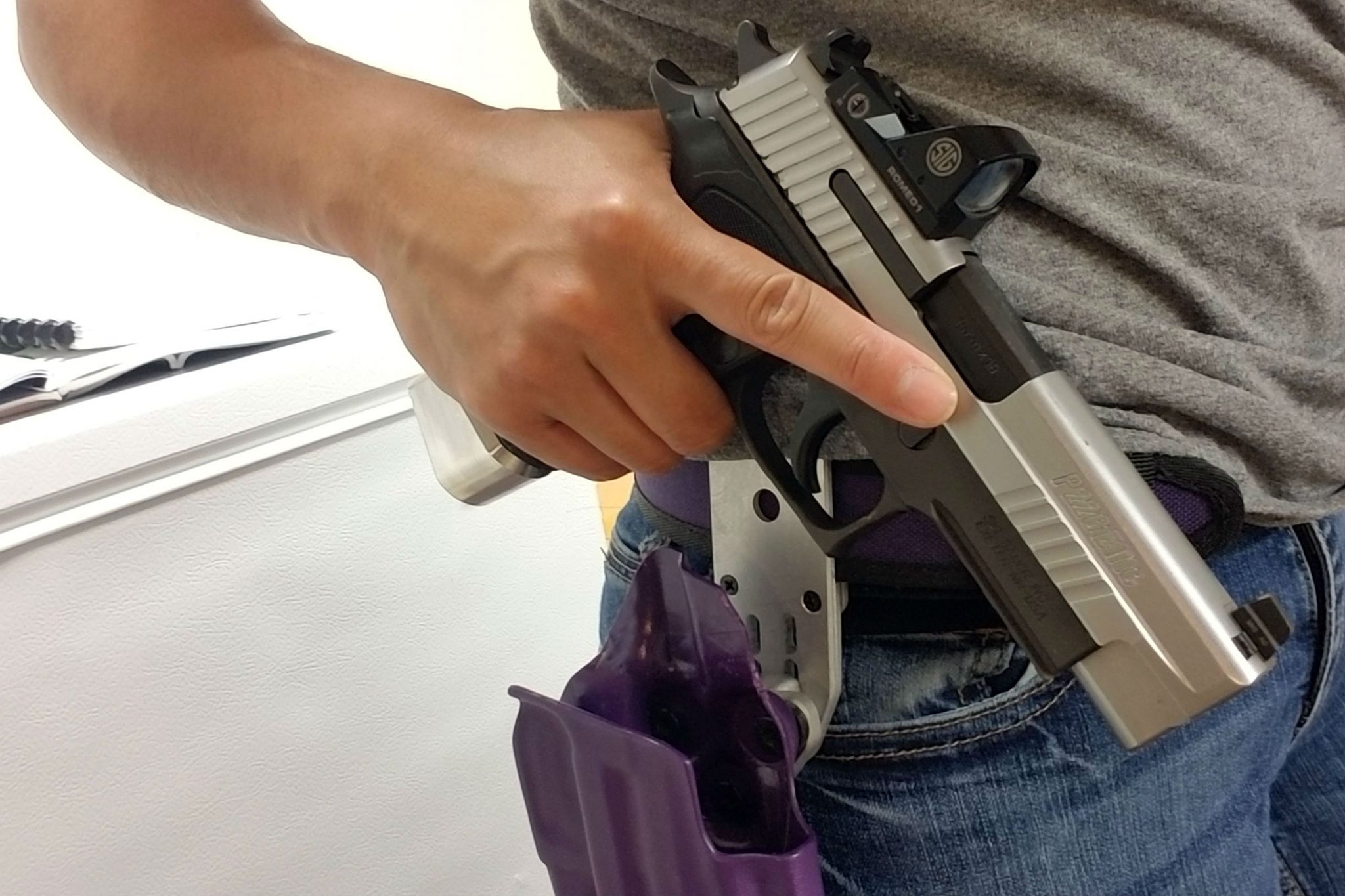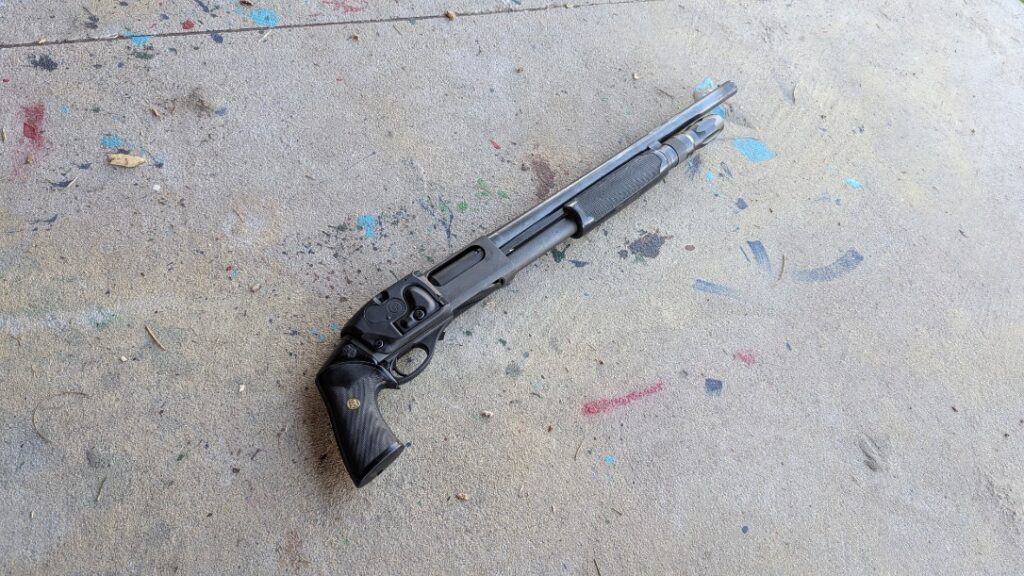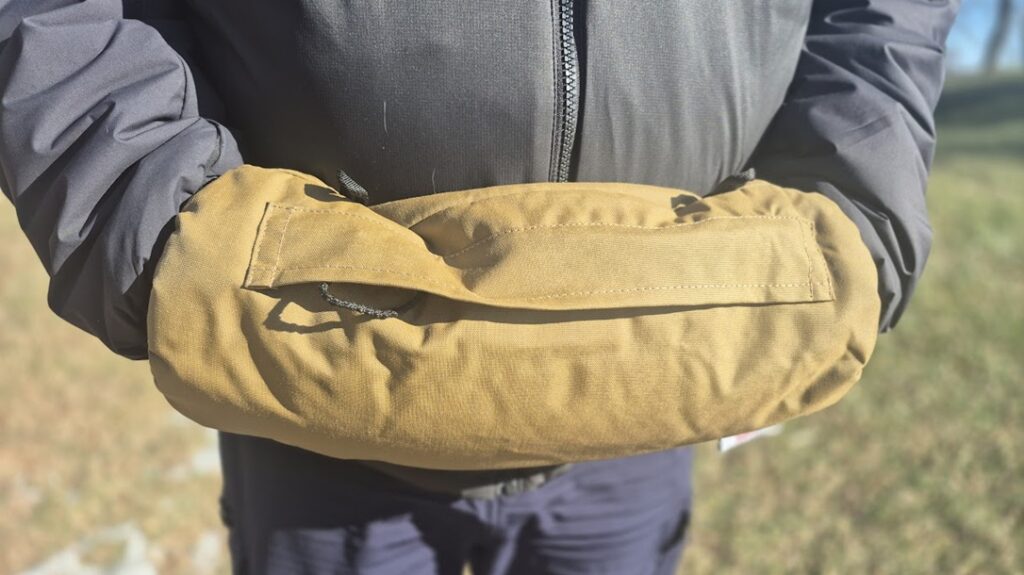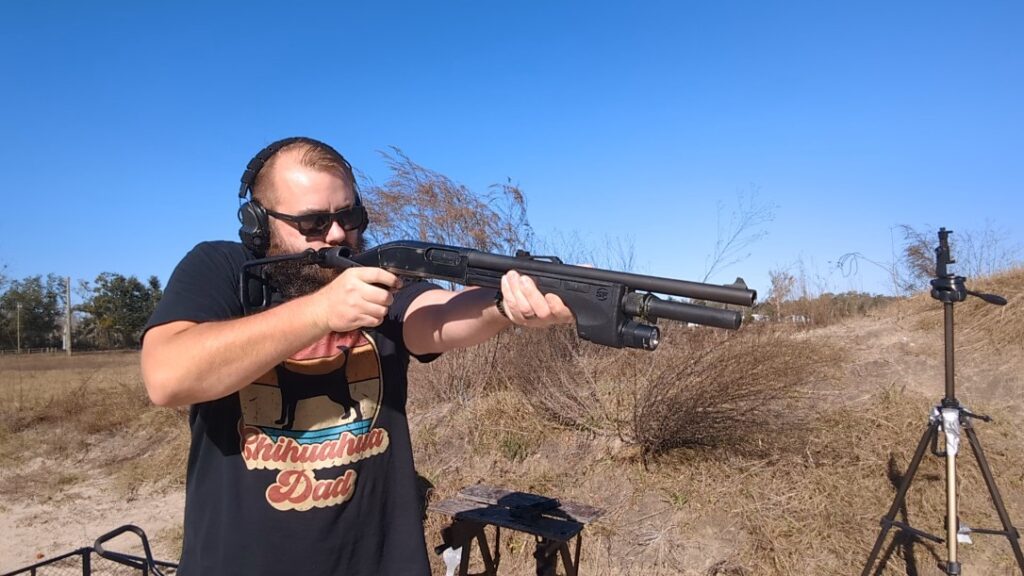Most all of us can parrot the rules of firearm safety, but they can get a little harder to follow as shooting becomes more complicated. This is especially true for what Jeff Cooper termed as Rule Three:
Keep your finger off the trigger until your sights are on the target.
Human hands like to make fists, and it’s so natural to want to put that finger inside the trigger guard when picking up a gun. A bit of practice and attention gets most people past that tendency for regular handling. Adding stress makes an awful lot of people slip back to bad habits. And when those hands clench with the trigger finger not firmly on the frame or slide of the gun…premature bangs happen.
Advertisement — Continue Reading Below
It becomes even easier to cheat this rule when the shooter is trying to pick up speed by getting onto the trigger earlier and earlier – sometimes with disastrous results. That’s not to say that one must have a perfect sight picture before putting a finger on the trigger, but there’s a definite point before which it’s problematic to do so.
Take a look at this slow-motion video of a shooter attempting to start running his heavy double-action trigger early in the draw. While you can see his finger in the trigger almost as soon as the gun comes out of holster, the hammer doesn’t start moving back and indicating pressure on the trigger until he is nearly to full extension. What, then, did he gain by getting on the trigger early and risking shooting in an unsafe direction?
Having your finger on the trigger is barely a step from actually firing the gun. That means it’s important for your muzzle to be pointed in a safe direction first. Rather than using a coarse definition of safe direction like “down range” or “not pointed at your body,” the Cooper rule gives you something more definite: wait until your sights are on target.
Advertisement — Continue Reading Below
Your sights might be aligned on the target quite early in the process of drawing your gun from a holster or coming from a ready position, even if your eyes aren’t behind them yet. It’s at that point that putting your finger on the trigger becomes less risky because if you fire any time between then and having a refined sight picture, your shot will land somewhere on the target you intend to shoot.
In fact, sometimes that’s the preferred effect.
For defensive shooters, there’s a concept called shooting from retention or shooting “from two.” Essentially, that means that as the gun comes out of the holster and the muzzle turns toward the bad guy, you can index the gun to your body and shoot. You aim by using the physical relationship of anchoring gun to body parts and body to target, instead of by using your eyes. It’s a useful skill when your attacker is close and you don’t have room to get your gun to full extension so that you can see the sights. Shooting from retention means rounds on target earlier in the draw, and less opportunity for your gun to be knocked around or wrestled away from you. You just need to be careful that the muzzle is oriented at the target before you start pressing the trigger.
Advertisement — Continue Reading Below
In the technical marksmanship realm, whether for defensive or sport applications, there’s a concept called “prepping the trigger.” For our purposes here, it involves beginning to put pressure on the trigger as the gun is presented, so that as soon as the sights are properly lined up to each other and the target, the shooter finishes the shot. That allows the shooter to do most of the work of firing while the gun is still in motion, so that she can shoot sooner. Prepping the trigger is not necessarily a commitment to fire the shot, but because it gets you most of the way there, it starts after the muzzle points at the target and after the decision to shoot has been made.
The trick is to wait until that moment when your sights are on target, however you’re defining that. Later is better than earlier, when the consequences of too early can mean putting a bullet into something or someone that ends up between you and your target – and that could mean yourself.
Just because you’re fast ninja shooting doesn’t mean that you sacrifice safety. As you can see, even these types of techniques can and should be performed with attention to the rules. Yes, you’re getting on the trigger sooner with them – but still not before the sights are on target.
Advertisement — Continue Reading Below















